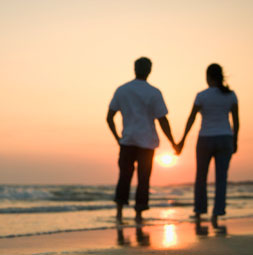
Sarah Swindell
Opinions Editor
Once upon a time, when I was a little girl in braided pigtails, I dreamed of a prince coming to me in some cinematic moment and the world would fall into place. I was intoxicated with childhood princess films, filling my imagination with dreams of happily ever after.
As an older girl in braided pigtails verging on actual full-fledged adulthood, I find myself flipping through little selfies on my phone, swiping through one-by-one as no potential ‘match’ seems to meet the nearly forgotten dream.
Dating in 2016 has taken a sharp turn from the traditional paths spoken about by older generations. There is some indescribable charm missing from the courtly love of medieval times and the 1950’s sock hop sweethearts our world has remembered fondly.
Today, we do not necessarily label or seek out total exclusivity. “Hook up culture” has become a buzzword when examining the habits of our generation, and when looking to pop culture to see why so many of us have moved to this new paradigm of romance.
Also, the options for relationships, overall, have grown as the better understanding of the LBGTQ+ community takes hold in the mainstream and as marriage equality in the eyes of the government brings about a different kind of metamorphosis for our societal definition of “happily ever after.”
It is a funny little phrase that can evoke a different image for each of us because it boils down to what makes us happy at the end of the day. What makes one individual happy might be love, marriage, and a baby carriage, but to another it might be no-strings-attached sex, while living independently and child free. Every dream is different.
Blaming dating apps for the degradation of the romance in our generation is a fallacy. They are just the innovations that come with technology in this day and age. They are only a transition from speed dating events and looking for love via newspaper advertisements. We might think dating apps encourage negative sexual promiscuity, but take a hint from the pros. They do not.
Biological anthropologist Helen Fisher broke down the actual evolution of dating during an interview for The Atlantic. She explained, “the vast majority of people on the internet, even on Tinder, are looking for a long-term committed relationship”. She continued, “Marriage used to be the beginning of a relationship, now it’s the finale.”
When you really think about it, that is not far removed from the cinematic dreams so many of us have for love. The twenty-first century allows for us to find partners that meet us as equals in this life, a privilege only captured in the last few decades, thanks to the closing gap on gender bias and the systematic control of sex.
Habits are not changing so much as definitions and social taboos are being altered to allow more personal freedoms on a more public playing field. It is a reflection of more tolerant times. It is not as if hookups never happened before smartphone apps existed. That would be a bold-faced lie.
Many of the “traditional” avenues we took were rooted in patriarchal thinking and the secrecy surrounding female seuxality. Men having to go to fathers for “their hand in marriage” is symbolic of the commodification women were placed under not so long ago.
Women were not allowed to know their suitor, and in many ways were restricted to social codes, while gambling on a man that their father deemed worthy. In those times, a woman only existed in correlation to a man, a repulsive idea even to the little princess inside of me.
This same cultural thinking shamed non-heteronormative relationships, crucifying those who sought an “abnormal” partnering. Specialized dating apps for these marginalized groups show that society is acknowledging these groups. Corporations are realizing these peoples are in large enough numbers that entire business models can be crafted with just them in mind.
I dreamed of happily ever after, not being traded to some man for a few goats. I never questioned the belief that a woman could find her happiness with another woman. It just mattered that they were happy together.
The Huffington Post published an article at the start of 2015 expressing the liberation in tangent to this digital dating scene. It described the new model of romance to promote gender equality.
As writer and Dr. Peggy Drexler, expresses, “But in addition to making hooking up easier, these apps have also made hooking up a far more equal opportunity. In fact, you could argue that for women, hooking up in the information age is the safest and most liberating it’s ever been. Expressing interest in someone on Tinder is not much different from doing so at a bar, except that you also have a chance to pre-screen”.
This assertion implies the historical truth that hookups have always happened, and later discusses how the amount of sexual activity has not spiked like naysayers of digital dating like to think.
Dr. Drexler cites, “A study presented at the recent annual meeting of the American Sociological Association found that just under one-third of college students have had more than one partner in the past year — a number comparable to rates in 1988, 1996, 2002, and 2010. Which means that hooking up has not replaced committed relationships.”
Even sociology can say the prince-princess scenario of my youth still has hope. No changing technology can alter the chemistry of attraction, nor will it alter our actions on those attractions. It is just a new avenue we can all take looking for love that reflects the social change of our culture.
Look fondly upon the past all you want, while looking down your nose at the future. It will not stop the inevitable. Sitting in my plastic tiara, I will be swiping through the frogs to my find my (maybe) prince charming.
